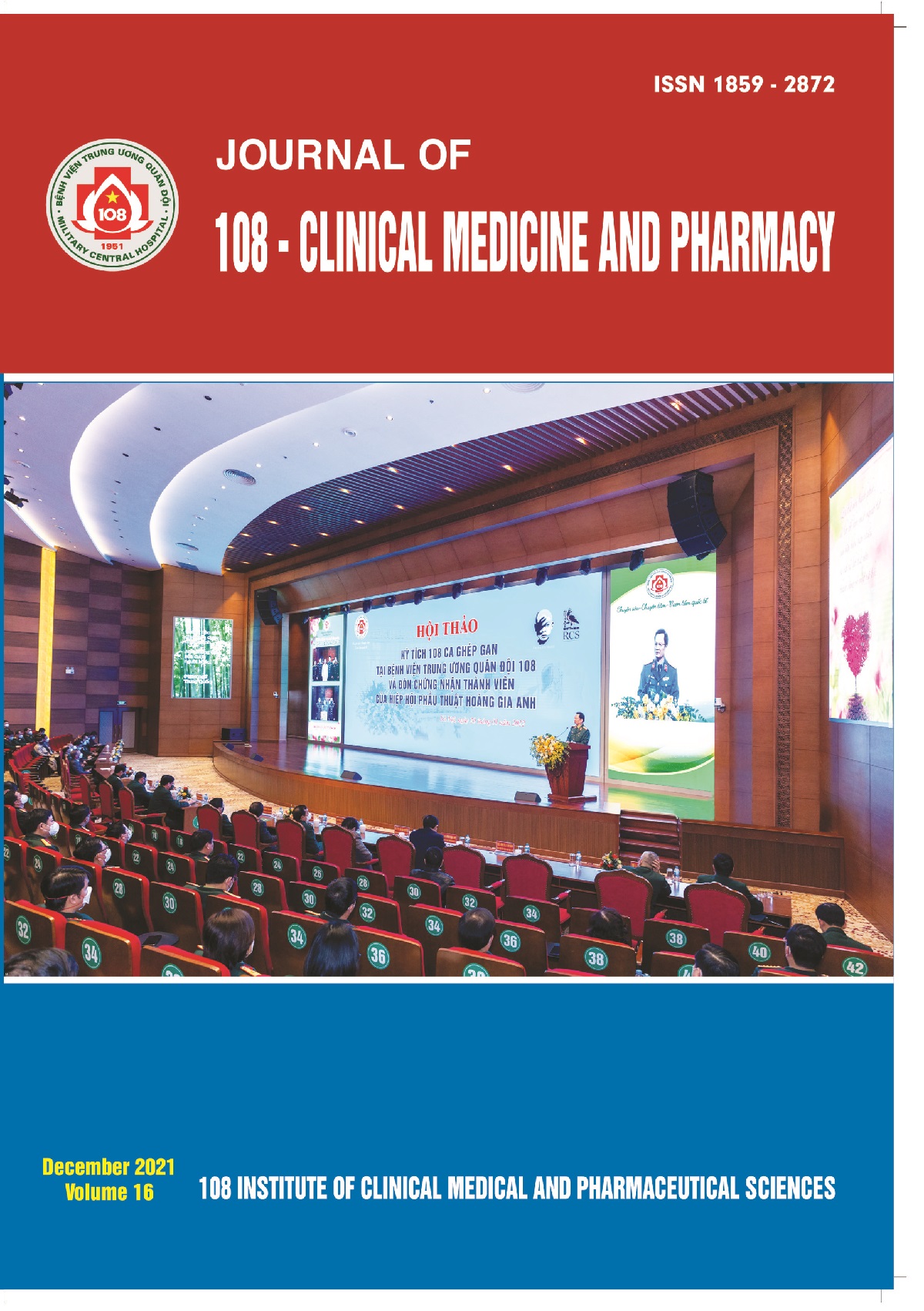Relationship between location, size, morphology and histopathological types of neoplastic colorectal polyps
Main Article Content
Keywords
Abstract
Objective: To evaluate correlations between location, size, morphology and histopathological types of neoplastic colorectal polyps. Subject and method: We reviewed endoscopic and histopathologic data from 215 patients undergoing colonoscopy. We categorized colorectal polyps according to anatomic location, size, and morphology. Histopathological features were classified using the World Health Organization (WHO-2019) classification. Result: Neoplastic polyps were mostly located in the left colon and rectum. Serrated polyps with dysplasia were not found in right colon. The proportion of colonic polyp with a size larger than 1cm and those with a size smaller or equal 1cm accounted for 85.1% and 14.9%, respectively. The cancer risk of polyps larger than 1cm were higher than those of polyps smaller or equal 1cm. Villous adenoma and serrated polyp with dysplasia were found exclusively in polyps bigger than 1cm (p<0.001). The proportions of sessile adenoma and pedunculated adenoma accounted for 41.9% and 58.1%, respectively. The existence of polyps stalk had no relationship with histopathological types (p=0.127). The cancer risk of villous adenoma was higher than those of other histopathological types (OR = 4.6, 95% CI = 1.9 - 11.3, p<0.001). Conclusion: The localization of polyp was mostly in left colon and rectum. Polyp size larger than 1cm and villous adenoma type were closely related to the malignant change in neoplastic polyps.
Article Details
References
2. O'Brien MJ et al (1990) The national polyp study patient and polyp characteristics associated with high-grade dysplasia in colorectal adenomas. Gastroenterology 98: 371-379.
3. Nagtegaal ID et al (2020) The 2019 WHO classification of tumours of the digestive system. Histopathology 76(2): 182-188.
4. Bouwens M et al (2014) Endoscopic characterization of sessile serrated adenomas/ polyps with and without dysplasia. Endoscopy 46(03): 225-235.
5. Võ Hoàng Minh Công (2015) Nghiên cứu đặc điểm lâm sàng, nội soi, mô bệnh học, biểu lộ protein p53, Ki67, Her-2/neu trong ung thư và polyp đại trực tràng lớn hơn hoặc bằng 10mm. Luận văn Tiến sĩ y học, Học viện Quân y Hà Nội.
6. Tze-Vun Fong, MSKC et al (2003) Correlation of the morphology and size of colonic polyps with their histology. Chang Gung Med Joural 26: 339-343.
7. Shaukat A et al (2021) ACG clinical guidelines: Colorectal cancer screening 2021. Am J Gastroenterol 116(3): 458-479.
8. Saito Y et al (2021) Colonoscopy screening and surveillance guidelines. Dig Endosc 33(4): 486-519.
9. Japanese Society for Cancer of the, C. and Rectum, Japanese Classification of Colorectal (2019) Appendiceal, and Anal Carcinoma: the 3d English Edition [Secondary Publication]. J Anus Rectum Colon 3(4): 175-195.
 ISSN: 1859 - 2872
ISSN: 1859 - 2872
